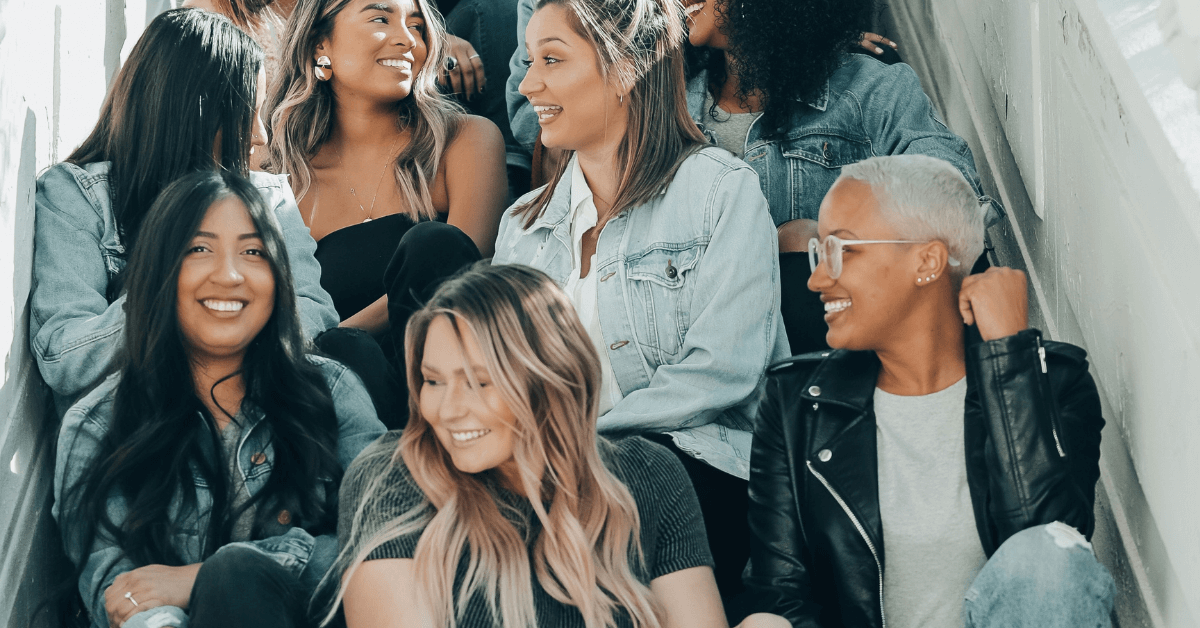Fenty Beauty, a cosmetic brand founded by the singer Rihanna in 2017, launched with 40 shades of foundation. This was an outstanding range of skin colors to be represented by a beauty brand. Their international ad campaign also featured women of a wide range of ethnicities, setting the record on YouTube for the largest launch of a makeup brand. The immediate and tremendous response proved that life-affirming business choices could also be bankable.
Creating an inclusive and welcoming environment begins with the basics. Salon branding choices like colors, fonts, and language significantly impact potential clients’ first impressions of a business. To create a truly inclusive salon, think about how to make your brand accessible. This simple strategy will make all your clients feel welcome. Legible fonts and ADA-approved colors are details that truly matter for accessibility. Read on to learn how to communicate that your salon is a safe place without saying a word.
The Importance of Inclusive Branding
An inclusive salon uses marketing that’s both friendly and reflects the kind of people they love to serve. This way, more folks see your message and feel like the salon is a great fit for them, no matter who they are.
Walk the Walk, Then Talk the Talk – An inclusive brand works best when the salon itself is already welcoming to everyone. Your marketing is like a big sign saying, “Hey, we’re inclusive – come on in!”
It’s what people want. According to a survey conducted by advertising agency Mikado International, “70% of Gen Z and Millennials are more likely to support a brand that is committed to diversity and inclusion.” And inclusivity goes beyond race or gender. It includes backgrounds, beliefs, or abilities.
Key Elements of Brand Accessibility
Accessibility goes hand-in-hand with inclusivity. Inclusion reflects a brand’s values, while accessibility ensures those values are communicated effectively to a wider audience. This means considering people beyond your typical customer base.
Studies show a significant portion of the population has disabilities – including vision, hearing, mobility, and cognitive. Accessible marketing helps ensure your message reaches everyone who could benefit from your services.
To get more clients in a salon, you need to promote your online booking system. Use your salon’s online presence to spread the word. Post about it on social media, include a “Book Now” button on your website, and send out email newsletters. Offer incentives like discounts for first-time online bookings to encourage clients to book.
Implementing Accessible Branding Practices
Here are some tips to ensure your salon branding is inclusive and accessible to a wider audience:
Fonts:
- Use high contrast between text and background colors (4.5:1 ratio) – tools like WebAIM can help test this.
- Consider dyslexia by using clear, sans-serif fonts like Arial or Verdana.
Language:
- Keep it simple and avoid jargon.
- Use headings and break up long text for readability.
Website & Social Media:
- Use a minimum font size of 16 for website text.
- Make navigation clear and intuitive.
- Buttons should be large, high contrast, and easy to find.
- Add “alt text” descriptions to images for screen readers.
Videos:
- Include captions and transcripts for people with hearing impairments.
Looking for More? UCLA has a helpful guide on designing with accessibility in mind.
Create a More Inclusive Salon with Continuous Improvement
Branding is an ongoing process. As your clientele grows, gather feedback to understand their needs. Use social media polls and encourage reviews to get insights. Offer traditional methods like suggestion boxes for anonymous feedback.
Stay current! Enroll in online accessibility and inclusivity courses, follow relevant trends, and subscribe to industry newsletters to ensure your branding remains welcoming and accessible.
More important than anything is to stay open, flexible, and vigilant because branding, like beauty, isn’t just skin deep. Ultimately, the desire to meet the needs of your community will help you stay clear-sighted about your brand’s accessibility and inclusivity goals. And, as always, if you need help navigating your salon’s branding, Glammatic always has your back.

Leave a Reply